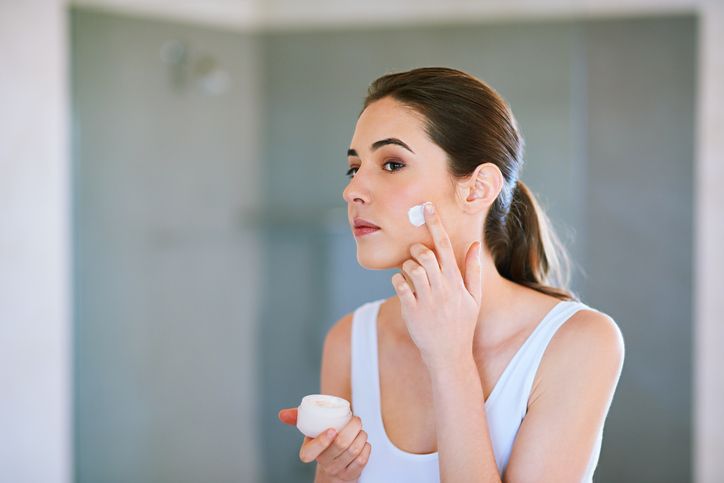- Home
- Trend
- Weight Loss Strategies
- Acne Tips
- Hair Health Information
- Blemish Removal Tips
- Acne Scar Removal Tips
- Muscle Building Techniques
- Intimate Care Tips
- Postpartum Intimate Care
- Eye Bags Wiki
- Tips for Face Slimming
- Secret of Permanent Hair Removal
- Breast Enlargement Tips
- Cure to Snoring
- Marionette Lines
- Skin-Tightening Secrets
When it comes to skincare concerns, acne is a big headache — but what’s even more frustrating are the scars that linger afterward, such as pigmentation spots and pitted scars. For many, the first remedy that comes to mind is using a scar removal gel. Indeed, scar gels can be effective in reducing redness, itchiness, and swelling, while promoting the skin’s self-repair and regeneration process, gradually fading scars over time. This article provides a comprehensive look at scar gels, how they work, and introduces popular and effective scar gel products available on the market.
Do You Really Understand What a Scar Gel Is?

Also known as scar treatment gel, scar removal gel or ointment, scar gels are topical formulations that often contain ingredients like allantoin, silicone, vitamins, and onion extract. When applied to the skin’s surface, these gels help reduce and fade scar tissue while promoting skin regeneration, restoring a smoother appearance.
They’re commonly used on scars caused by surgery, trauma, burns, or acne. However, the effectiveness of scar gels has its limits — they work best on superficial scars. If the scar is older and deeper, a gel alone may not be enough. To maximize effectiveness, it’s recommended to begin applying the gel as soon as the wound has healed.
Know Your Scar Type Before Using a Scar Gel

i. Pigmented Scars
The most common and least severe, these are superficial scars caused by melanin accumulation. They usually occur when a wound only affects the epidermis or upper dermis without reaching deeper layers, so they rarely cause permanent marks or texture changes. Depending on your skin’s metabolism, they may fade naturally over time. Applying scar gel right after the wound heals can speed up the fading process.
ii. Hypertrophic Scars
Commonly known as keloids, these are more severe. When the skin is injured, it produces excess collagen to repair the wound. If collagen production goes into overdrive, it can lead to raised and even spreading scars. Some people are genetically more prone to developing keloids. These scars are difficult to treat with gels alone and may require laser therapy or other dermatological procedures.
iii. Atrophic Scars
Also considered severe, these are the opposite of hypertrophic scars. Instead of raised tissue, they result in indentations or “holes” in the skin. When a wound penetrates deep into the dermis and inflammation disrupts collagen production, the new tissue and collagen may not align properly, causing the skin to sink inward. While scar gels can’t fully remove atrophic scars, they can help reduce discoloration and inflammation.
免費體驗
Acne Treatment
1 Minute Self-Registration
Date should not be before minimal date
What’s the Difference Between Scar Gel, Scar Cream, and Scar Sheets?
i. Scar Gel
Scar gel is a lightweight, non-greasy type of scar ointment. When stored in the fridge, it provides a cooling sensation upon application. Thanks to its better penetration ability, it’s easily absorbed by the skin and doesn’t leave a sticky residue, making it ideal for oily skin.
ii. Scar Sheets
Scar sheets, like gels, contain ingredients such as silicone, vitamin E, and allantoin. They work by sealing the scar and allowing ingredients to soften and flatten the tissue. However, because they create an occlusive barrier, long-term use can clog pores and potentially lead to folliculitis.
Scar sheets come in various sizes and can be cut to fit your scar. They are reusable — just follow the cleaning and storage instructions. However, they are not suitable for wounds that are still inflamed, stitched, scabbed, or not fully healed. Also, results can take time — usually two to four months, or even six months for more severe cases.
Common Ingredients in Scar Gels
i. Medical Grade Silicone Gel
Silicone gel is clear, lightweight, and odorless. It flattens scars by applying gentle pressure and limiting oxygen supply, helping prevent collagen overgrowth — particularly helpful for treating keloids. It also locks in moisture, softens scar tissue, and reduces vascular activity, which helps lighten darkened scar tissue.
ii. Allantoin
Derived from plants, allantoin improves moisture retention and soothes inflammation, promoting healthier skin regeneration. It also helps metabolize skin cells and melanin, fading discoloration. Its mild nature makes it suitable for sensitive skin.
iii. Vitamin A
Vitamin A supports skin immunity and repairs damaged cells. It also fights free radicals, contributing to skin healing and scar fading.
iv. Vitamin C
Vitamin C boosts collagen production and skin repair. It also inhibits tyrosinase, reducing melanin formation and improving hyperpigmentation.
v. Vitamin E
One of the main culprits behind scar formation is oxidative stress. Vitamin E combats free radical damage, encouraging skin repair, softening scars, and improving elasticity.
6 Recommended Scar Removal Gels on the Market
i. Dermatix Ultra Scar Gel
Made in the USA, Dermatix is a popular option for treating everyday scars from insect bites, burns, and surgery. It’s a topical silicone gel with no fragrance and is quickly absorbed. It features a CPX (Cyclopentasiloxane) formula that helps soften scar tissue and regulate collagen. It also contains vitamin C, which offers UV protection and reduces pigmentation.
ii. Contractubex Scar Gel (Germany)
This gel combines three active ingredients and is suitable for most scar types including burns, surgical scars, and acne marks. It hydrates the skin, reduces redness and itchiness, and improves elasticity. It helps flatten both new and old scars while preventing hypertrophic scarring.
iii. Hiruscar Gel (Switzerland)
Hiruscar is a gel-based product that uses the MPS formula to boost skin metabolism and help ingredients penetrate deep into the dermis. It contains vitamins C and E, along with aloe vera, to nourish the skin and improve moisture retention, reducing scar tightness.
iv. ScarAway Scar Gel
This lightweight gel is easily absorbed and non-greasy. It contains medical-grade silicone to reduce redness and prevent scar thickening. It’s suitable for both new and old scars.
v. Mederma PM Intensive Overnight Scar Cream
A popular nighttime formula, Mederma PM contains Tripeptol™ Complex — a powerful antioxidant complex that supports overnight skin repair. Clinical studies show visible improvement in just 14 days with consistent nightly use.
vi. Kobayashi Scar Gel (Japan)
A best-seller in Japan and a must-buy for many tourists, this gel contains heparin, allantoin, and dipotassium glycyrrhizate to promote blood circulation and fade hyperpigmentation. However, it’s not recommended for facial use and should not be used on acne scars.
免費體驗
Acne Treatment
1 Minute Self-Registration
Date should not be before minimal date
Precautions When Using Scar Removal Gels
i. Check the Ingredients
Always read the label carefully to avoid irritants such as alcohol, fragrance, or preservatives — these can worsen skin conditions.
ii. Do a Patch Test
Even though most scar gels are mild, it’s best to test a small area first, especially if you have sensitive skin. Watch for reactions like redness, itching, or rashes before applying widely.
iii. Don’t Combine with Scar Sheets
Some people layer scar gel and scar sheets to speed up results — but this can clog pores due to the occlusive nature of scar sheets and the stickiness of the gel. This may lead to breakouts or worsen the condition.
iv. Daily Skincare
While using a scar removal gel, you must not neglect your daily skincare routine. That’s because scar healing and skin tissue repair require plenty of moisture and nutrients. If you’re careless with skincare, it can significantly reduce the effectiveness of the scar gel.
In addition, don’t forget to apply sunscreen during the day. This is because UV rays from the sun can seriously damage the skin and worsen melanin deposition, which hinders scar improvement.
Editor’s Trial: Target Acne at the Root! Trying Out Perfect Medical’s Acne Treatment
I've always had acne-prone skin since I was young. And every time I get a breakout, it often leaves behind scars. The red, swollen acne marks can take forever to heal. That’s why I wanted to try tackling the root of the problem — acne itself — to reduce the chances of scarring.
A friend told me many people had tried Perfect Medical’s Acne Treatment, so I decided to register for a trial myself!
Before the treatment, I had to fill out a simple online registration form — it only took about three minutes. After that, I received a confirmation SMS, and then all I had to do was show up for the treatment.
At first, I was worried the treatment might hurt, but it didn’t at all! The therapist first thoroughly cleansed my face. Then they used a handheld device to gently suction impurities from my skin. There was a slight pulling sensation, but no pain at all. According to the therapist, this step draws out deep-seated dirt and debris — and sure enough, after the treatment, the serum bottle was filled with brownish-yellow liquid!
Next, the therapist applied their exclusive medical-grade essence deep into the skin to hydrate and moisturize, maintaining the skin’s oil-water balance. This serum also helps stimulate collagen production!
After the treatment, I immediately noticed a significant reduction in oiliness on my face. The red, swollen acne on my chin had also calmed down a lot. Even some of the acne scars looked less visible! Considering this was just one session, I genuinely recommend the Perfect Medical Acne Treatment to anyone who, like me, struggles with recurring acne.
Free Trial: Acne Treatment免費體驗
Acne Treatment
1 Minute Self-Registration
Date should not be before minimal date
FAQ

What is a scar removal gel?
Also known as scar cream, a scar removal gel is a topical ointment usually containing ingredients like silicone, vitamins, and onion extract. It helps improve scars caused by surgery or everyday injuries by promoting the skin’s self-repair process. Just apply it directly onto the scar. However, the effectiveness is limited — it works best on mild, superficial scars. Older or deeper scars may not respond as well.
What ingredients are commonly found in scar gels?
Formulas vary by brand, but typical ingredients include silicone, vitamin E, vitamin A, vitamin C, and aluminum hydroxide (Alcloxa).
When is the best time to use a scar gel?
Many people believe the earlier you apply a scar treatment, the better — but applying it before the wound has fully healed can irritate the skin and worsen the wound. The best time to start using scar gel is once the wound has completely closed and is no longer bleeding or oozing.
How long does it take to see results from a scar gel?
Scar gels generally require long-term use before you’ll notice significant fading. Depending on your skin type, healing ability, and the product’s effectiveness, results may take 3 to 6 months. In more severe cases, it may take over half a year.
When can I stop using scar gel?
How long you need to use a scar gel depends on how fast your scar improves. Once the scar becomes less visible and blends in with the surrounding skin tone, you can stop using it.









